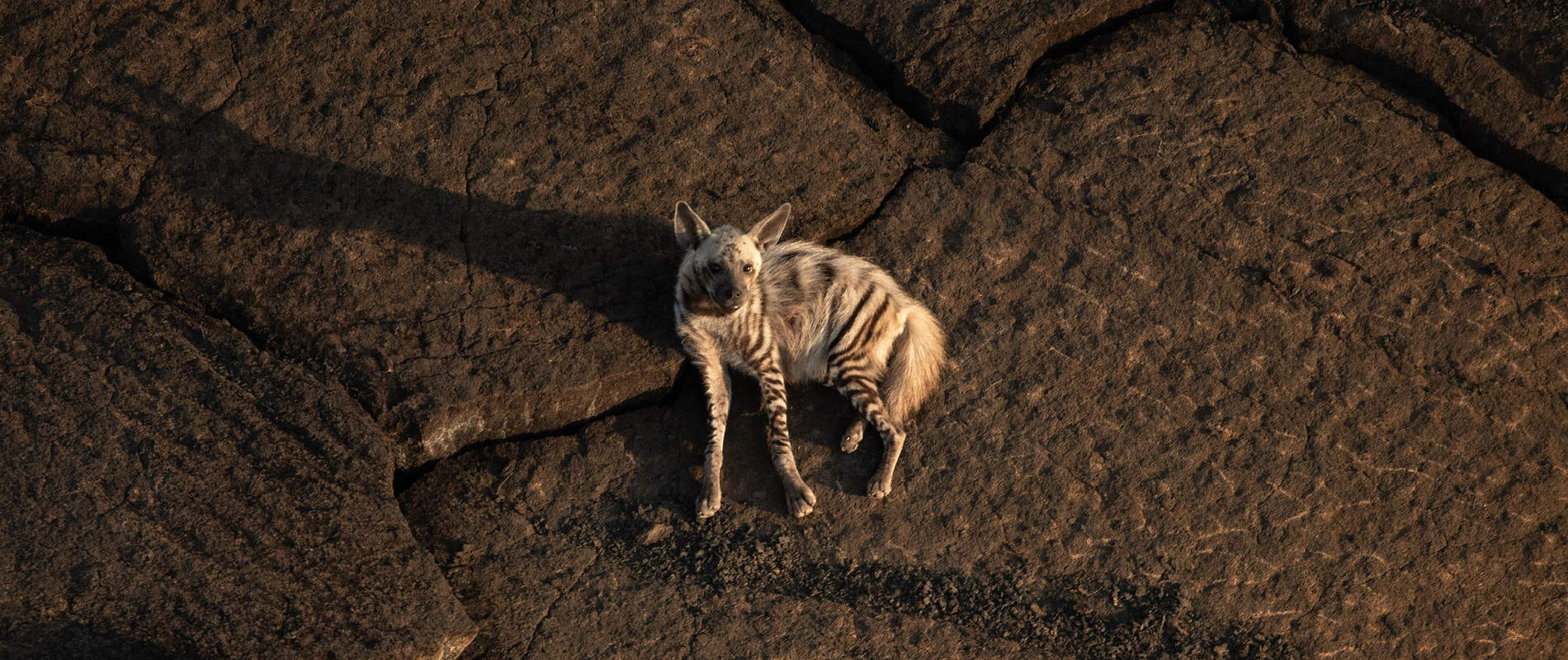The Aerial Unit responded to veterinary treatments in September, along with a number of other field operations, including the rescue of an orphaned rhino, an elephant translocation, nine human-elephant conflict cases, and just two bushfires.
Four veterinary cases, all involving elephants, resulted in successful treatments. They included an elephant with a deep cable snare in which the SWT/KWS Tsavo Vet was collected from Voi and flown to Kaluku before boarding an SWT helicopter to dart the elephant, remove the snare and treat it. An elephant with an arrow wound was found near Kamboyo, Tsavo West Park Headquarters, with a suspected arrow wound, sighted first by a fixed-wing aircraft, and then darted from a helicopter and treated successfully. Another tragic case involved an elephant who had been speared 10-12 times. He was reported in Selengai, darted from a helicopter, and treated before being given a fair prognosis.
The final elephant case was the treatment of a young calf near Aruba in Tsavo East. It was found with a severe injury to its rear right leg and front left leg, suspected to have been caused by a lion attack. In this case, the SWT/KWS Amboseli Vet was flown in a fixed-wing aircraft to Aruba airstrip, where two ground teams from SWT and KWS assisted the vet in darting the protective mother so that the calf could be attended to. Unfortunately, the infection from the bite marks to the rear leg had spread into the joint, so a guarded prognosis was given.

Two cases, both involving injured lions, resulted in the animals disappearing and no treatment taking place. The second case involved two fixed-wing aircraft: one to locate the injured lioness and another to collect the SWT/KWS Amboseli Vet. While every attempt is made to confirm ‘eyes-on’ before mobilising resources, sometimes animals move into thick bush and can be difficult to keep track of, especially predators.
One orphan rescue was conducted in September, for a days-old baby rhino found abandoned at a water hole in Tsavo West. Despite searching the area, the mother could not be located, and KWS requested that the calf be rescued, as it was unable to fend for itself in the wild or survive without his mother's milk. The tiny calf was collected in an SWT helicopter and flown to Kaluku for special care.

In addition to these cases, one translocation was also conducted at the request of KWS for a bull elephant that was repeatedly breaking the Ngulia Rhino Sanctuary fence to gain entry and exit. The bull, a collared individual that had been moved down to Tsavo from upcountry, was first located by a fixed-wing aircraft before being darted from a helicopter and loaded onto a crane truck for transportation to Ithumba in the north of Tsavo East.
Nine human-elephant conflict cases were attended to by a helicopter, resulting in the successful movement of 24 elephants out of settlements and back into protected areas.

Poaching activity was minimal, with only two harbours sighted, both in Tsavo East. In one, there was evidence of logging as well as poaching (bird traps, lamping, batteries, etc.). Although not involving an aerial sighting, a helicopter was also deployed to collect a ground team that had made an arrest of a bushmeat poacher deep within the Park and many hours' walk away from their vehicle. In a separate incident, two men were spotted by one of our pilots walking into the Chyulu Hills NP, but it's unclear what their intentions were. They quickly hid in nearby forest, and unfortunately, despite deploying a team to the area with the aircraft overhead, they were able to escape undetected.
An uncharacteristically small number of firefighting callouts were made in September. Historically, our pilots and teams can spend as much as half of the month attending fires. Two relatively small fires were attended to, one by helicopter that assisted in deploying ground teams and firefighting equipment to the fire, and another that involved a fixed-wing aircraft providing cover and guidance to an Air Tractor making water drops over multiple days. On day one, the fire was successfully put out; however, it reignited and had to be attended to on a second day.

Charcoal activity was observed on an industrial scale on Galana Ranch, and also on three occasions in Tsavo Park – twice in Tsavo East and once in Tsavo West. In one instance, a small wisp of smoke emanating from the lava forest in Chyulu Hills National Park was noticed by a pilot, presumably from a wood fire. It was unclear, though, if this was related to charcoal or wood carving activity. Logging for timber was also observed twice in September, once in Tsavo East and once in Shimba Hills National Reserve. Evidence of honey harvesting was also observed from the air on two occasions. In terms of illegal livestock, there was a continued improvement in the situation across the Parks.
Highlights during September included signs of upcoming rain, such as widespread acacia blooms, as well as several ostrich nests. There were also a number of rhinos seen and a spectacular sighting of a striped hyena soaking up the morning rays on a black lava flow in Tsavo West.
